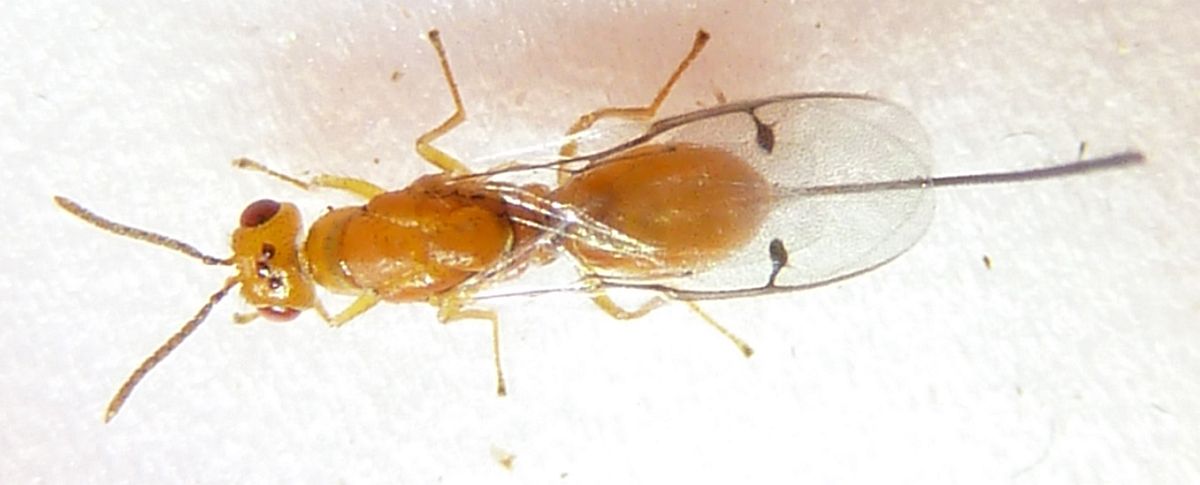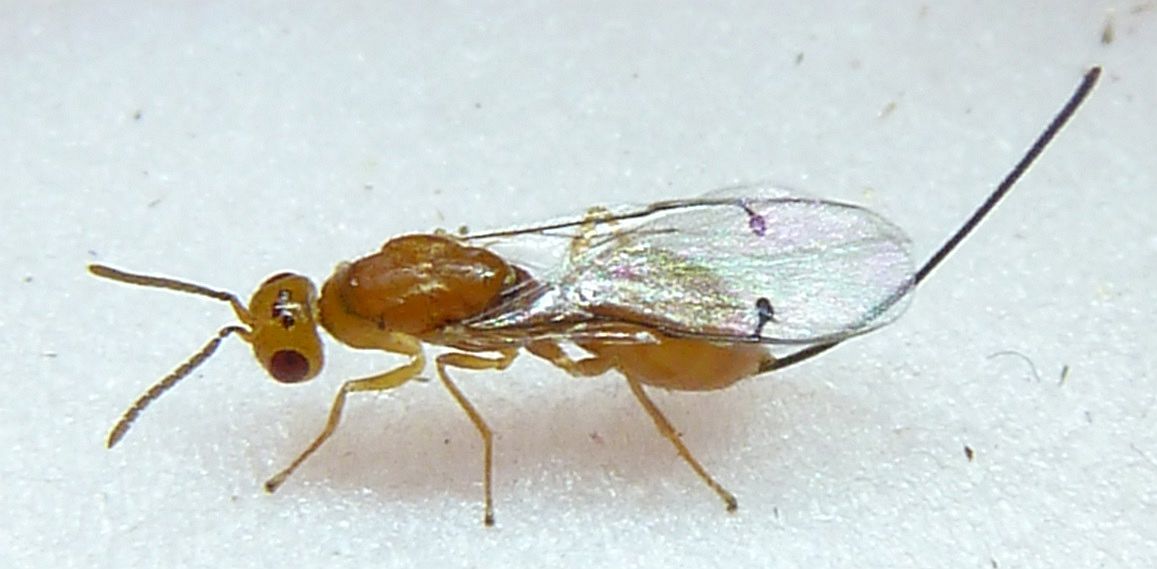April 27
2015 April 27
Scott Gilmore writes: I have attached an interesting Chalcid Wasp I found in my Upper Lantzville backyard on Saturday April 25th. It was found flying around a Douglas Fir and sure enough has been confirmed as a Douglas Fir Seed Chalcid by Ross Hill (Hymenoptera: Torymidae, Megastigmus spermotrophus)
The BC Forestry Genetics Council has a nice little leaflet on the life cycle of http://www.fgcouncil.bc.ca/PM-Factsheet07-Megastigmus-spp.pdf
[Jeremy Tatum comments: The English name “chalcid” might seem to imply that it comes from a family “Chalcidae”. There was a family with such a name at one time, but since then the taxonomy of these and related insects has been greatly revised – although the English name “chalcid” has stuck for many of them. At present there is a superfamily called Chalcidoidea, which includes many related families, one of which is Chalcididae (with an extra syllable stuck in there!) They are all very tiny insects, and Scott obviously has some hidden expertise in photographing them. Some of them are butterfly and moth parasitoids. The adult wasp of these lays many eggs inside a single moth egg. The grubs that hatch then spend their entire larval and pupal life inside the moth egg. I have seen about twenty adult chalcidoid wasps of the family Pteromalidae emerge from a single egg of the Polyphemus Moth. The insects that Scott has photographed are not moth parasitoids, however, but from another chalcidoid family – Torymidae – and they spend their immature stages in fir cone seeds. The link to the leaflet that Scott gives is most interesting and worth looking at.]

 Megastigmus spermotrophus (Hym.: Torymidae) Scott Gilmore
Megastigmus spermotrophus (Hym.: Torymidae) Scott Gilmore

Megastigmus spermotrophus (Hym.: Torymidae) Scott Gilmore
